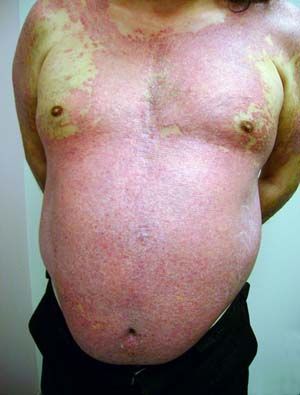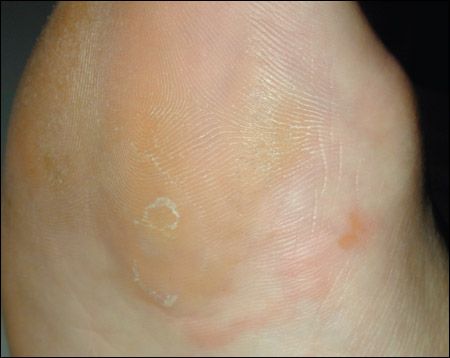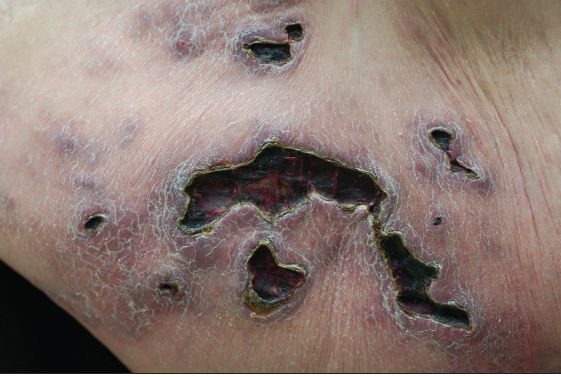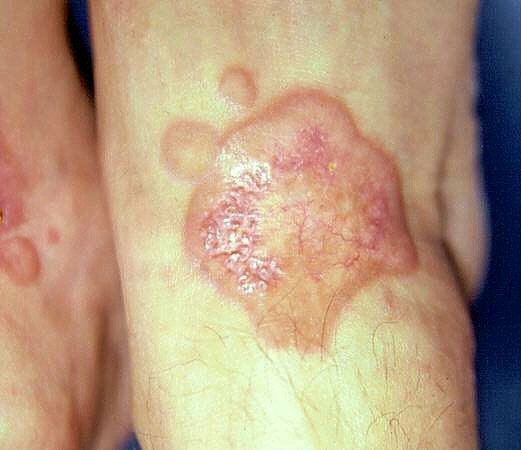Battle of the Bulge: An Obesity Photo Quiz
Obesity, a health hazard in its own right, is linked with heart disease, diabetes, and a wide range of other clinical concerns. This week’s photo quiz offers a variety of presentations to test your diagnostic acumen.
Question 1:
This obese patient presented with widespread, almost confluent psoriasis with intense itching. His obesity suggests concomitant metabolic syndrome.

For the discussion, click here.
Click here for the next question.
For the answers, click here.
Question 2:
Hyperkeratosis is one of the most common disorders that affect the feet, particularly in obese persons.

For the discussion, click here.
Click here for the next question.
For the answers, click here.
Question 3:
This abdominal rash developed while a 63-year-old obese woman was traveling in Israel. She was admitted to a hospital, where she received intravenous antibiotics, and returned to the United States. The physical findings suggested ecthyma, consistent with the culture results.

For the discussion, click here.
Click here for the next question.
For the answers, click here.
Question 4:
A 34-year-old morbidly obese man had multiple lesions on both feet that appeared rather rapidly. A review of systems disclosed polyphagia, polydipsia, and polyuria. The lesions were composed of yellowish, firm plaques with large telangiectasia coursing over the top. There was no associated scaling. This is the typical morphology for necrobiosis lipoidica.

For the discussion, click here.
Click here for the next question.
For the answers, click here.
Question 5:
A 56-year-old Hispanic man presented with multiple, symmetrically distributed, soft, nontender swellings on the shoulders. He also had growths in the upper thighs, neck, and occipital areas. Because of the symmetry of the masses, his condition often is mistaken for obesity.

For the discussion, click here.
For the answers, click here.
ANSWER KEY:
Question 1. Answer: C
Question 2. Answer: D
Question 3. Answer: B
Question 4. Answer: A
Question 5. Answer: A